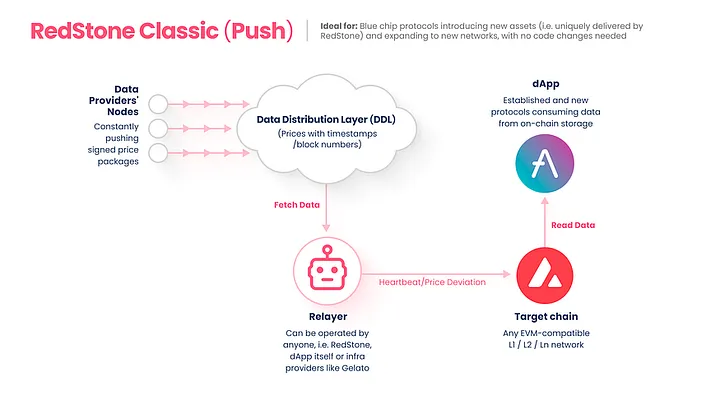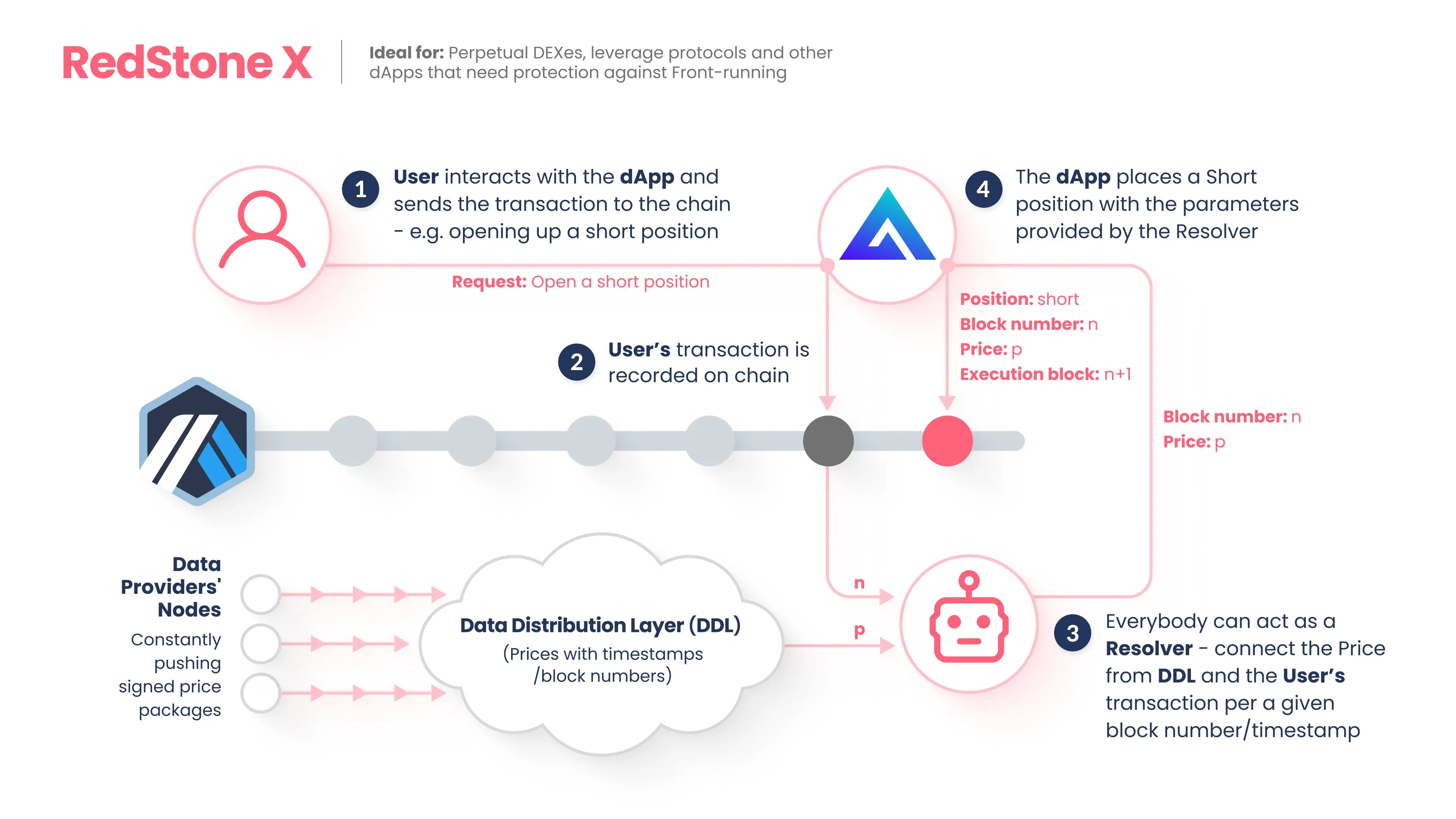RedStone's adaptable architecture makes it a go-to solution for integrating oracle data into decentralized applications (dApps) and blockchain protocols. With RedStone, developers can focus on building their core functionalities without worrying about the underlying oracle infrastructure. Its modular structure follows key principles that ensure efficiency, scalability, and flexibility across various use cases.
Key Principles of RedStone’s Architecture
-
**Separation of Responsibilities:**RedStone is divided into distinct modules, each with a well-defined role. This makes the system easier to understand, maintain, and scale. By separating tasks, it becomes more straightforward to integrate new features or technologies without disrupting existing operations.
-
**Flexibility:**RedStone’s loosely coupled modules allow for easy customization. Developers can mix and match components to meet the diverse demands of different applications. This flexibility ensures seamless integration across current and future dApps.
-
**Reusability:**RedStone’s components are designed for reusability, cutting down redundant coding. This approach saves developers time, enhances system performance, and improves code quality.
Three Integration Methods of RedStone
1. RedStone Core Overview
RedStone Core offers a hassle-free integration method that seamlessly embeds data into user transactions. With minimal setup, developers can pull real-time oracle data without additional infrastructure or development.
**Best suited for:**Applications looking for a plug-and-play solution, especially DeFi platforms that need up-to-date price feeds.
**Example:**A DeFi platform can leverage RedStone Core to give users instant access to the latest market prices when trading, ensuring they have the most accurate and timely data to make informed decisions.
2. RedStone Classic Overview

RedStone Classic provides developers with a more customizable integration path, offering greater control over how oracle data is incorporated into their applications. This method is ideal for use cases where advanced data handling or logic is required.
**Best suited for:**Applications that need intricate data processing or custom logic—such as gaming apps or applications with complex decision-making flows.
**Example:**A weather-based gaming app can integrate RedStone Classic to dynamically update in-game weather conditions based on real-time data. Players will experience realistic, immersive gameplay that responds to actual weather events.
3. RedStone X

**Overview:**Currently under development, RedStone X promises to offer an even higher degree of flexibility and control for developers. This advanced integration option will open new possibilities for customization, especially for complex enterprise applications.
**Best suited for:**Enterprise solutions that require comprehensive control and real-time data accuracy, such as supply chain management platforms.
**Example:**A company managing its supply chain can use RedStone X to track product movements in real-time, offering complete transparency and enabling more efficient inventory control.
Conclusion: RedStone’s Modular Oracle for the Future
RedStone’s modular design and versatile integration options make it an exceptional oracle solution for a wide variety of applications. Whether you need fast and simple integration with RedStone Core, more granular control with RedStone Classic, or advanced customization with the upcoming RedStone X, there’s a solution tailored for your needs.
By adopting RedStone, developers can accelerate blockchain adoption, reduce development time, and unlock new levels of efficiency in their applications. Explore the documentation and start integrating RedStone into your tech stack today to unlock the full potential of decentralized applications.




评论 (0)